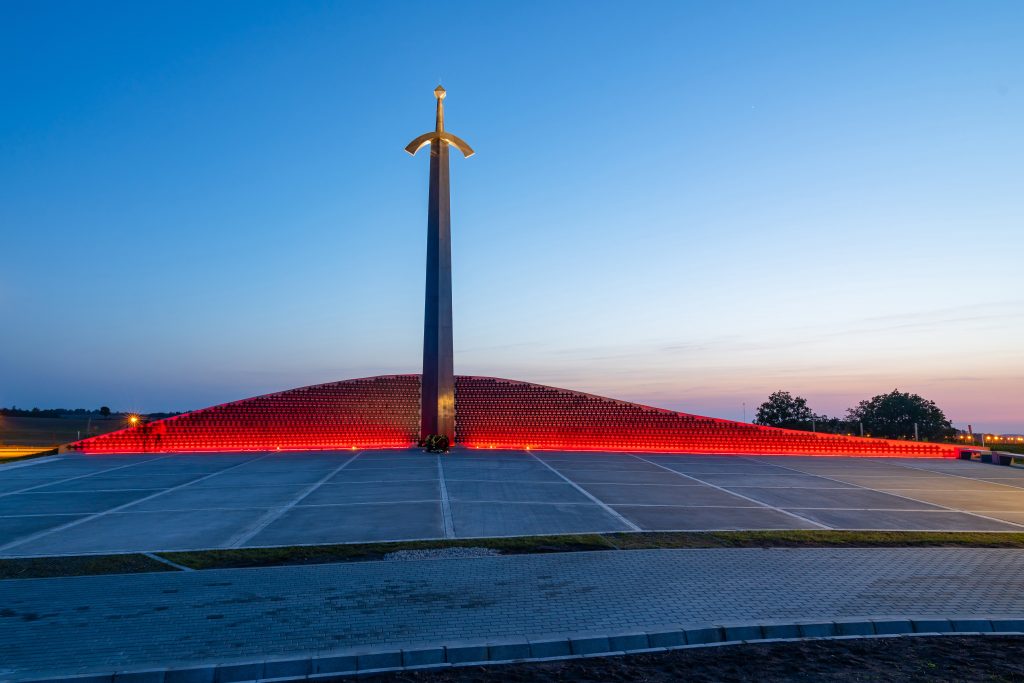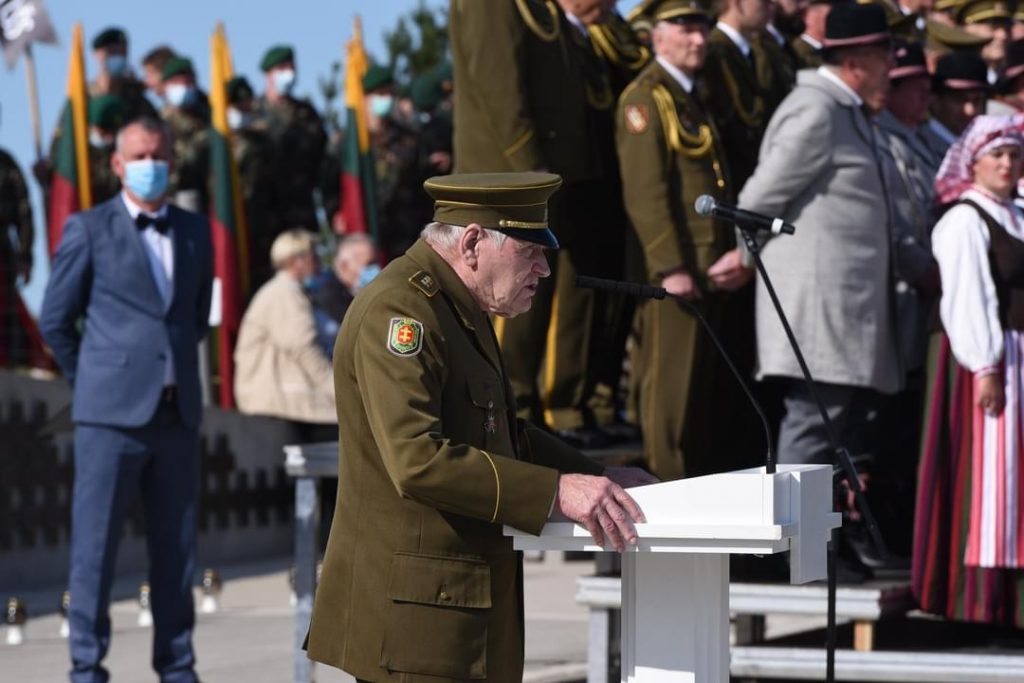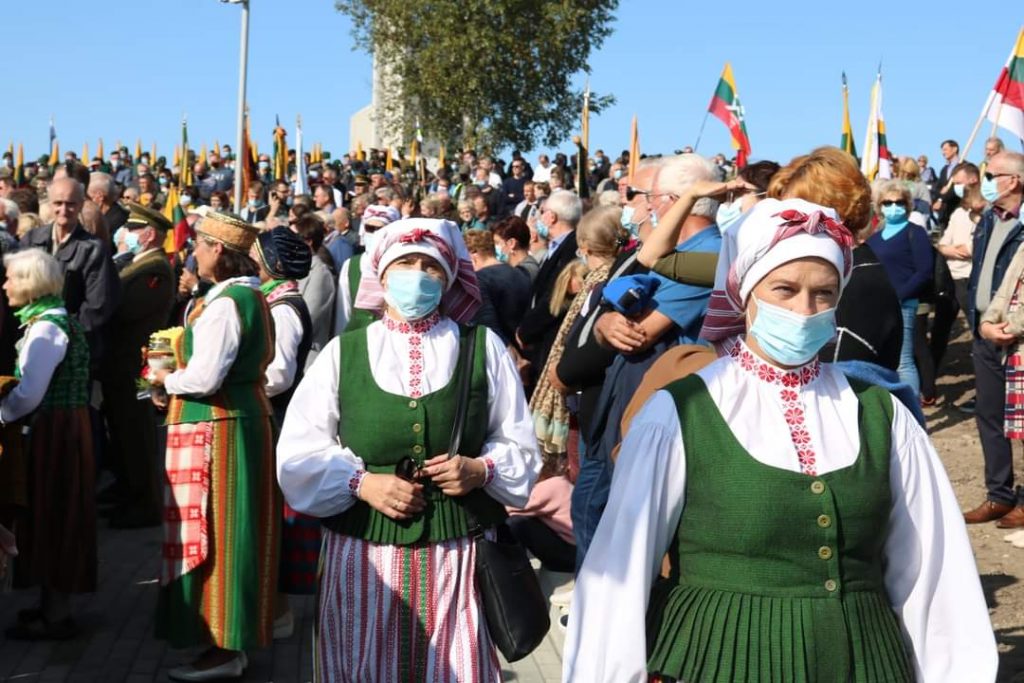About memorial
The idea behind this memorial is to commemorate all 20 000 partisans who have sacrificed their lives for their country’s freedom in an unequal fight against the Soviet occupants in the post-war period. We believe that with the Centennial of the Restoration of the State as well as the 100th anniversary of Lithuanian Armed Forces and the 70th anniversary of Lithuanian Partisans Declaration of February 16, 1949 coming up it is high time to honour those who were willing to sacrifice the most precious thing – their lives – for Lithuania’s freedom.
The location of the memorial is the village of Kryžkalnis (Raseiniai district) – a unique place in terms of geography and countryside.
The memorial consists of the following: a display of the history of partisan fighting at the bottom of the hill; a 25-metres-tall obelisk in the shape of a Lithuanian sword; a wall of remembrance with 20 000 surnames of the dead partisans, inscribed in stele in the shape of the cross of Vytis; a square of honouring (capacity up to 1000 people) with the tomb of the unknown partisan; a chapel. During the second stage of the project we are planning to build a museum of partisan history.
The main symbols of the memorial are the Lithuanian sword obelisk and the wall of remembrance with the tomb of the unknown partisan which commemorates 20 000 partisans.
The sword, stuck at the top of the hill is a symbol of victory and liberation. That is precisely why we chose a sword from the most glorious period of Lithuanian history – the Grand Duchy of Lithuania. This way we are matching the achievements of the partisans to the biggest victories in Lithuanian history. Obelisk-sword will be clearly visible to all travelling on the most important Lithuanian highway Vilnius-Klaipėda from dozens of kilometres away.
The wall of remembrance (height- 5 metres, length- 30 metres) symbolises the fighting spirit of the partisans: strong and unbreakable like a rock. In addition, the separated part of the hill forms an outcrop where we create a square for honouring ceremonies. On the wall there is a composition of 1300 stained steel crosses of Vytis with the dead partisans’ surnames (16 surnames on every stele). When it gets dark the crosses will be illuminated in red LED light, creating a metaphor of the names written in blood.
The sword divides the remembrance wall into two halves and slips into the ground – it is precisely in this place we plan to build the symbolic tomb of the unknown partisan – a black cross of Vytis with red edging in a dark green background (carved out of granite boards). This is the exact sign partisans sewed on their uniforms’ sleeves during the years of resistance against the Soviet occupants in 1944-1953.
The composition of the memorial is complete with a chapel that is already in production (architect – V. Bakšienė). Inside, all visitors can pray for the dead. Monolithic concrete blocks surrounding the chapel will display the signs and names of the 9 partisan districts.














